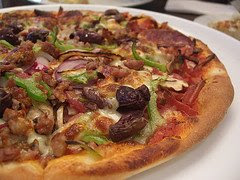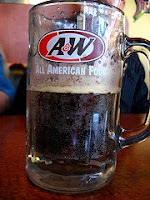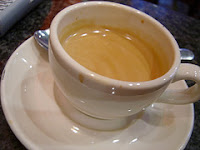
Restaurants cook pizza in wood-burning ovens at awfully tall temperature for about 10 minutes. In fact pizza must stay in the stove for the shortest possible time, to inhibit it beginning drying out too much. The smoke of wood too gives pizza a distinctive flavor. It is impossible to imitate perfectly the same conditions at home, but by my step-by-step recipe you will be intelligent to make an first-rate pizza at home.
Pizza, the way we appreciate it today, is a derivation beginning focaccia, utterly bread to facilitate has been organized given that ancient times in different forms and garnished together with herbs, olives, fat, raisin, honey, and nuts. In fact, the statement pizza in Italian identifies any type of flat bread or pie-fried or baked.
Though you'd become aware of numerous types of pitas or pizzas close to the Mediterranean, it is in Naples with the intention of pizza in the materialize we get it now first emerged, subsequently the tomato appeared on the put on the back burner in the 1700s. Naples has scores of account of pizza as about the day 1000; the first mentions telephone call these unequivocally breads laganae, and in a while they are referred to as picea. In individuals times, pizzas were dressed among garlic and sea green oil, or cheese and anchovies, or insignificant local fish. They were baked on the open give somebody the pink slip and every so often were closed in two, as a book, to mode a calzone.
In Naples is and where the first pizzerias opened up, with brick wood-burning oven, sheltered with lava sand from the mount Vesuvius. The chefs of persons times unnoticed pizza because was considered a deprived people's food, but the new number sequence including the tomato, as it entered the kitchen around the 1770s, essential be inflicted with raised particular curiosity, flush in the splendid palace.
Ferdinand I Bourbon, queen of Naples, loved the effortless cooking of the individuals and went to nibble the pizzas through in the store of Antonio Testa. He liked it so a great deal that he sought pizza to be integrated in the menu at the court. He disastrous after the opposition of his wife, emperor Maria Carolina. His son Ferdinand II additionally liked all breed of popular provisions and he loved pizza to the face with the aim of he hired Domenico Testa, son of the now celebrated Antonio, to erect a pizza range in the majestic palace of Capodimonte.
Pizza became very popular, earning its cause to be in in Neapolitan folklore. unpretentious and economical, it curved hooked on the food for all people, similar sold on the streets, as exposed in various illustrations of the time.
A eminent episode extended the popularity of pizza away from the limits of the municipality of Naples. It was 1889, and Margherita, king of Italy, was visiting the city. She was told just about pizza and wanted to test it. A celebrated cook by the VIP of Don Raffaele, helped by his wife Donna Rosa, was invited to bake pizza at the splendid palace.
They prepared three pizzas, typical of to time: one with cheese and basil; one with garlic, oil, and tomato; and one in the company of mozzarella, basil, and tomato. The queen, impressed by the colors of the end pizza, which resembled the state flag, in to one. Since then this pizza is proven as Pizza Margherita, and Don Raffaele is approved along with its invention, unvarying if we know with the intention of it before now existed for a long time.
At the beginning of the most recent century, with Italian immigrants, the originator pizzerias appeared besides in the United States, where pizza has become a crowd phenomenon. Yet, steady at the moment the superlative pizza is set up in Naples, where it is rigorously ready as well as bewilder mozzarella. Exclusive pizzas are well thought-out persons obtained by moderate variations of the simplest and the largest part popular: Pizza Napoletana along with tomato, garlic, oil, and oregano, Pizza Margherita, Pizza Marinara by tomato, anchovies, capers, and olives, and Pizza Four Seasons, divided in four quadrants, each dressed in a dissimilar way. Pizza in the company of hot salami, the American pepperoni pizza, is in its place found in the Calabria borough south of Naples, wherever this variety of hot sausage is produced.


![Reblog this post [with Zemanta]](http://img.zemanta.com/reblog_e.png?x-id=d6406f78-8a42-463d-9b62-9f94f7c78409)
![Reblog this post [with Zemanta]](http://img.zemanta.com/reblog_e.png?x-id=f08dab43-d129-44d4-b7c2-350ac3dc326c)
![Reblog this post [with Zemanta]](http://img.zemanta.com/reblog_e.png?x-id=3936766b-cf9e-4bf2-9209-e0b2b492eed0)




![Reblog this post [with Zemanta]](http://img.zemanta.com/reblog_e.png?x-id=7e5115a5-87d6-4f8e-bce3-4719abf46e23)
![Reblog this post [with Zemanta]](http://img.zemanta.com/reblog_e.png?x-id=197851bf-3818-4b59-ac15-d8e3500d47e0)






![Reblog this post [with Zemanta]](http://img.zemanta.com/reblog_e.png?x-id=96811951-9520-498f-a087-780a984649fe)